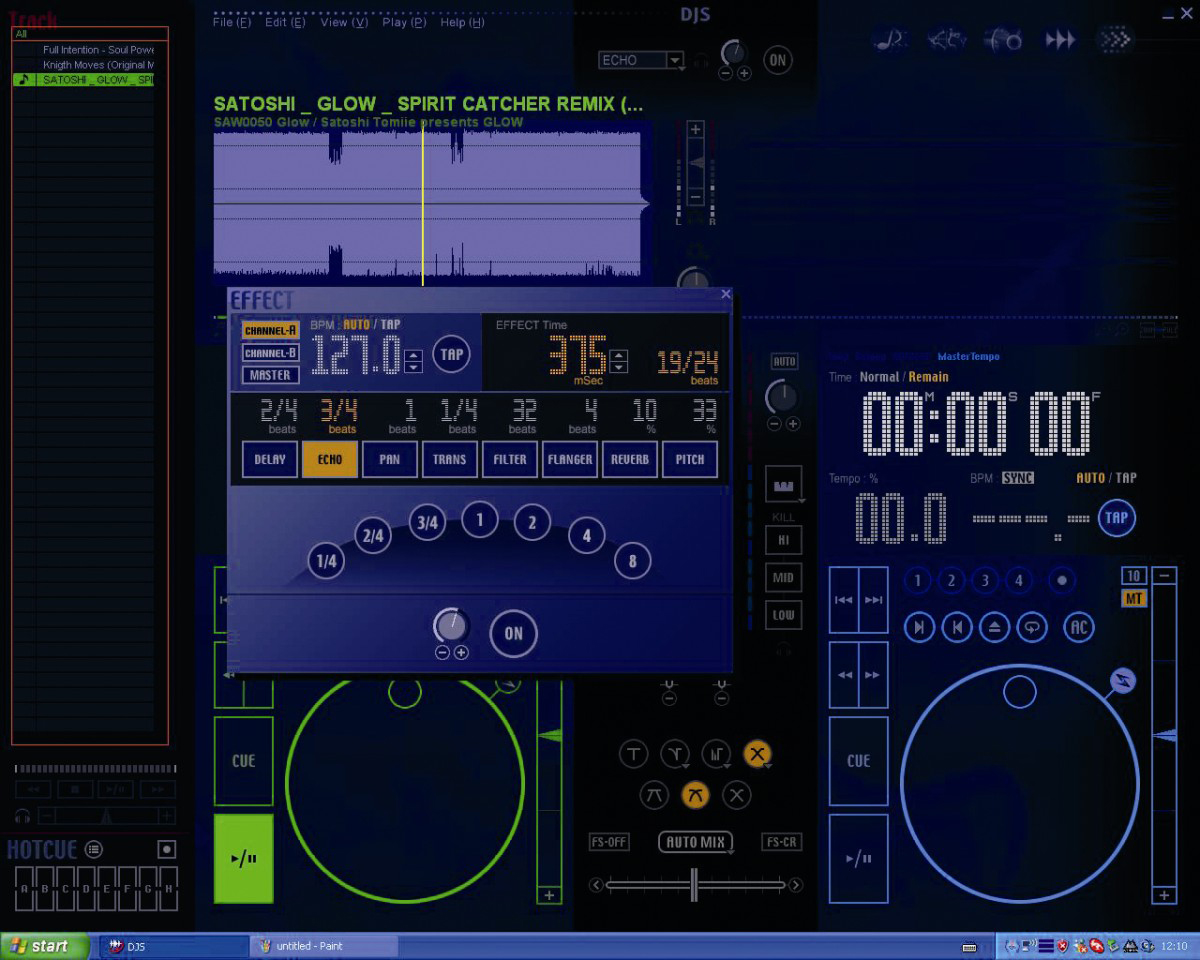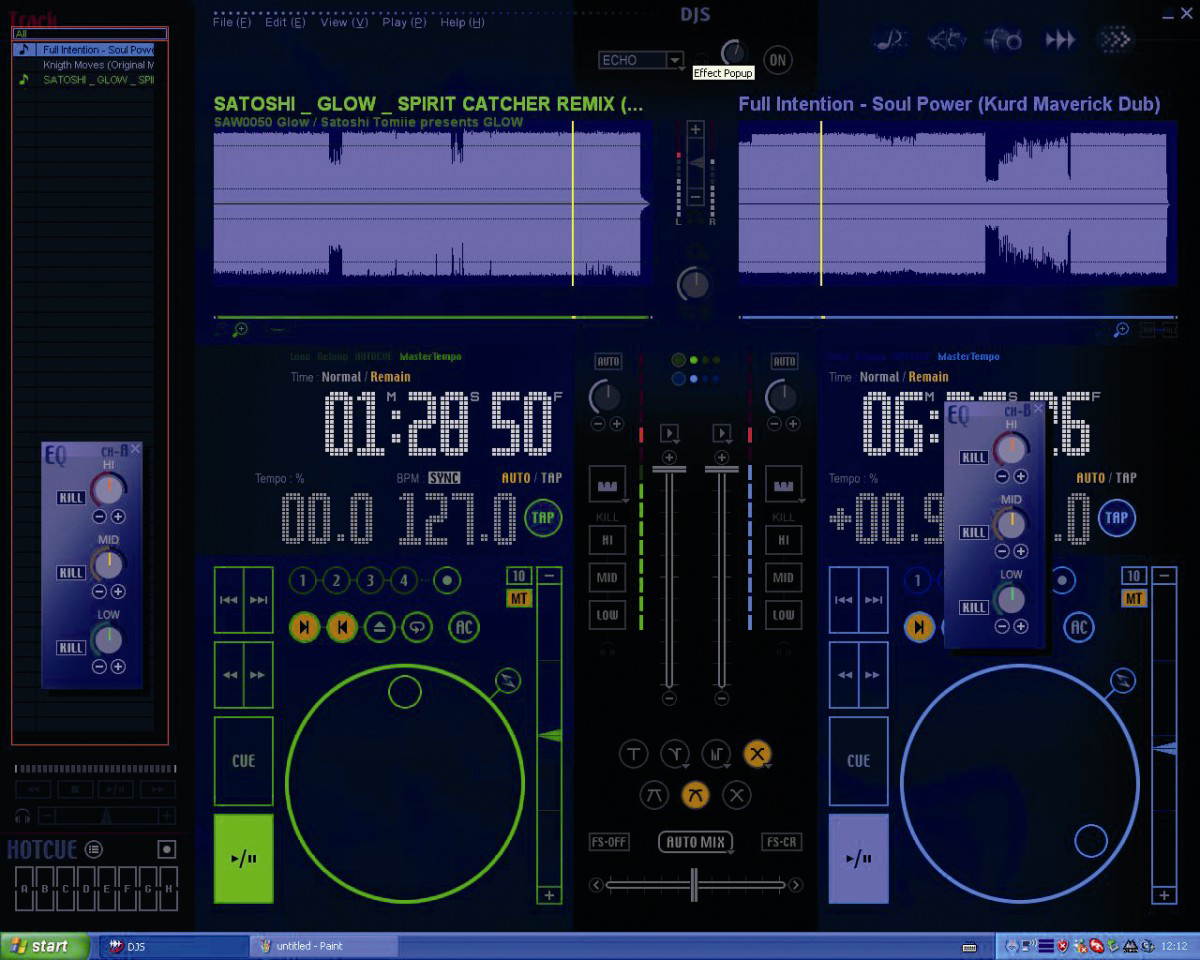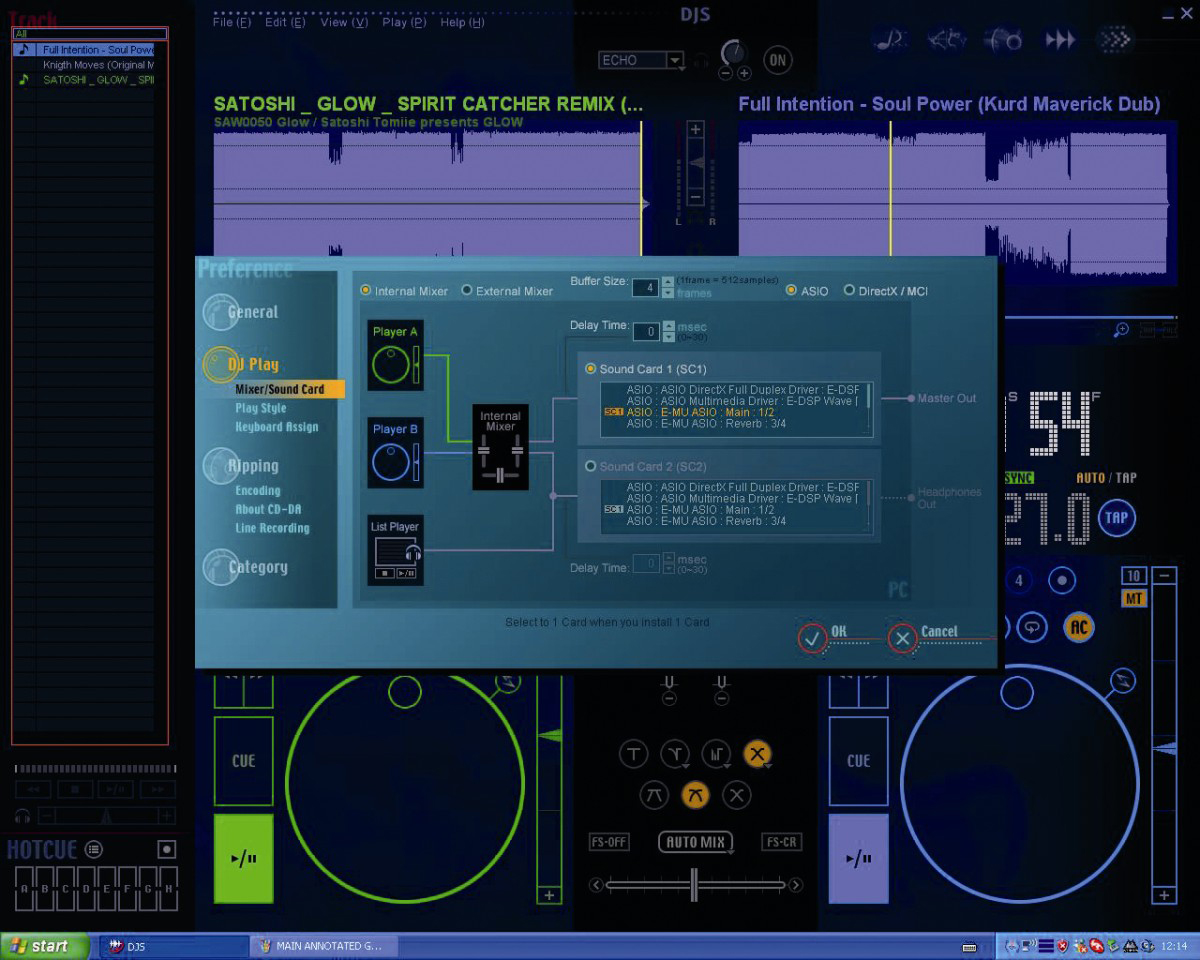MusicRadar Verdict
DJS´s score is ‘rescued´ by excellent effects and beat-mixing facilities, but these flatter what is an otherwise woefully flawed package.
Pros
- +
Good auto-mixing facilities. Fantastic effects.
Cons
- -
Terrible GUI and layout. Only two channels. Laughable scratching facility. MP3-only playback No MIDI control No printed manual Confusing output routing
MusicRadar's got your back



When the manufacturer of the industry-standard pro CD turntable, the CDJ-1000 Mk 3, releases a virtual DJing package at the same time as updated versions of their flagship mixers and CD decks, you know that the DJ market is going through some big changes. But can Pioneer possibly achieve the same jaw-droppingly good levels of design and execution in software as they have in the hardware world?
Rightly or wrongly, first impressions count for a lot, and, sadly, the alarm bells started ringing almost as soon as we got our hands on DJS. The screenshots on the box are more reminiscent of that 80s cyber-classic Tron than they are of the current crop of virtual DJing packages, and when we opened up the box we found that the only printed manual was a brief Quick Start Guide. If you want to access the full manual, you'll have to squint at the screen or use up a good stack of A4 paper.
First impressions can be misleading, of course, but after we'd gone through the brief installation process and chosen a default music folder to import from, any residual optimism started to ebb away…
Problems
The first problem is the interface, which, as suspected, is decidedly retro. This would be fair enough if it was clear, but the dull-coloured graphic outlines aren't particularly easy to make out (it took us ten minutes to find the master volume) and only serve to mask what is a reasonably well-spaced selection of buttons. The layout is based on Pioneer's trademark CD turntable interface.
Sadly, one glaring omission from the front panel is EQ. There are kill switches for treble, midrange and bass, but to make graded EQ adjustments you need to open up a floating screen that obscures the main display. When you consider that most DJs use at least low-end EQ adjustments on both channels every time they perform a mix, this seems pretty silly to us.
In use, DJS actually starts to fare a little better. Once you've imported your tracks, it does an extremely good job of analysing their tempos, so you can simply drag and drop them into the two virtual decks and get mixing right away. In fact, the auto-mixing and auto-beatmatching facilities are among the best we've used.
But even this light at the end of a long, wireframe tunnel turns out to be an oncoming bullet train, as the only file type that DJS recognises is MP3 and there are, as we mentioned, just the two decks. We could almost forgive the latter limitation, but the MP3-only playback is a real disaster, even if you do get WAV/CD-to-MP3 conversion facilities with the software.
Good points
Thankfully, DJS does score with its tried and tested Hot Cue cue point system and looping facilities, which are lifted directly from the CDJ-1000. It also has an excellent effects section - this is a direct port from the DJM-600 mixer. But these bonuses just highlight the fact that Pioneer have naively assumed that their excellent reputation in the hardware market will be enough to see them through in the software arena, for in other, crucial areas, they simply haven't done their research.
The output routing to enable headphone monitoring or external mixing, for example, is the most unclear we've come across, which is particularly worrying when you consider that DJS is likely to appeal to beginners. The scratching facility, meanwhile - the main selling point of the CDJ-1000 - is absolutely laughable when controlled with a mouse. Granted, scratching in this way is never ideal, but in this case, there's no consistency or control whatsoever, and unless you constantly move the mouse, playback starts up again regardless of whether you're still holding down its button.
Finally, and most staggeringly, there is absolutely no facility to control the software with any external MIDI hardware. There's a dazzling array of keyboard stickers (with tiny print) and you can control the decks with Pioneer's own DPM-555 (an MP3-file-playing CDJ so uncommon that we've never actually seen one in real life), but this just leads us to suspect that DJS represents a cynical attempt to convince people to shell out for over a grand's worth of Pioneer hardware which will ultimately end up doing the job of a £100 control surface. The fact that DJS is clearly an evolution of the three-year-old software bundled with said hardware does little to dispel this suspicion.
Verdict
So in the end, it's impossible to recommend DJS. It isn't all bad, but when you consider the alternatives - most of which don't have anything like the same number of shortcomings and omissions - then you start to wonder how on earth Pioneer thought they'd get away with it. In short, we'd suggest that you avoid DJS and buy Traktor 3 or Ableton Live instead.
MusicRadar is the number one website for music-makers of all kinds, be they guitarists, drummers, keyboard players, DJs or producers...
- GEAR: We help musicians find the best gear with top-ranking gear round-ups and high-quality, authoritative reviews by a wide team of highly experienced experts.
- TIPS: We also provide tuition, from bite-sized tips to advanced work-outs and guidance from recognised musicians and stars.
- STARS: We talk to musicians and stars about their creative processes, and the nuts and bolts of their gear and technique. We give fans an insight into the craft of music-making that no other music website can.
Arturia’s V Collection gets a Roland JP-8000 emulation and lo-fi synth/sampler, along with five more instruments and a host of updates
Capture the sound of The Last of Us season 2's haunting soundtrack with Spitfire Audio’s latest software instrument, Ronroco by Gustavo Santaolalla
“Nope, it’s real”: Jack Black and Keanu Reeves both confirmed for upcoming Weezer movie










